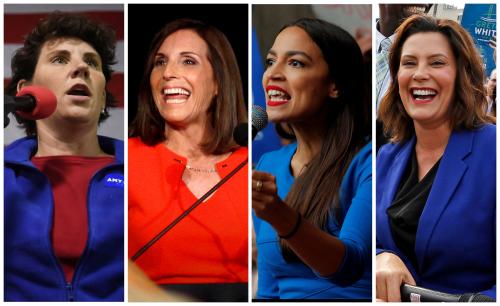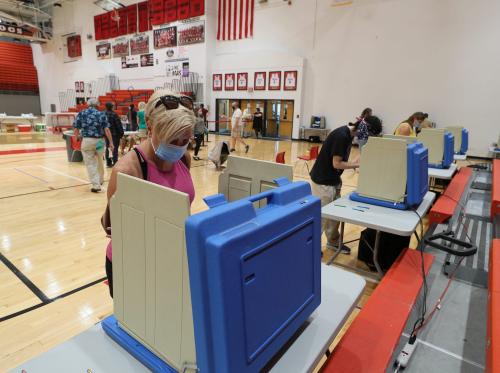So far 19 Democrats have announced, in one way or another, that they are running for the Democratic nomination for president. This is an exceptionally crowded field and one that is very hard to read. The two current front-runners, Senator Bernie Sanders and former Vice President Joe Biden, may turn out to be just too old for a party that is trending young. Some candidates in the race appear to be running to enhance their brand—the initial Trump strategy, which Democratic voters probably won’t try again. Everyone else in the race, from Congressmen to Senators to Governors are, so far, plausible vice–presidential nominees hoping to break out.
At this point, however, one thing is pretty clear. There will be a woman on the 2020 Democratic ticket. A woman may break away from the pack and win the top seat; there are several strong female candidates. But if that doesn’t happen, there will almost certainly be a woman in the vice-presidential slot.
Women have led the opposition to Trump from Election Day 2016 on—54 percent of women voted for Hillary and 53 percent of men voted for Trump. The day after he was inaugurated, thousands of women assembled in Washington and in cities around the country in protest. Things haven’t gotten better as the Trump presidency has matured. Trump’s approval/disapproval rating among men is equal as of this spring, with 47 percent approving of the job he’s doing and 47 percent disapproving. But among women only 32 percent approve of Trump’s performance while 63 percent disapprove. Separating children from mothers at the borders may be outweighing Ivanka’s work on the child care tax credit.
Unlike other groups that dislike Trump, unpopularity among women may be the most consequential simply because there are so many women in the electorate. Ever since 1980 women have been turning out to vote more often than men. From 1980 (when turnout for men and women was about equal) to 2000, the gap was around 2 percent. It gradually widened to 3 percent and grew to 4 percent in 2016, contributing, no doubt, to Hillary’s large popular vote victory.
Nowhere did women’s general antipathy to Trump show up more clearly than in the 2018 midterm elections. In that election women maintained their edge in turnout, voting at a 4 percent higher rate than men. But they also skewed even more Democratic than they did in 2016, voting for Democratic candidates at a rate of 59 percent, while men skewed Republican at a rate of 51 percent. In addition, a record number of Democratic women ran for office; winning primaries more often than male candidates and eventually winning their elections. The result? With the help of many formerly Republican or independent women, the House changed hands and Nancy Pelosi became Speaker.
The goal for the Democratic nominee in 2020 will be twofold: hold onto the states that Hillary won, and expand the map just enough to get to 270. The first goal should not be too difficult—it’s hard to find a blue state in 2016 that is trending purple or red in 2020. So the name of the game will be to flip a few states into the blue column. In 2018 suburban women were the key and in 2020 they will be key again.
But nothing about this is straightforward. Melania may emerge from her cocoon to prevent her husband from once again separating mothers and babies at the border—something he keeps wanting to do. Or Democrats may move so far left that they send swing voters scurrying back to the pro-business security of the Republican party.
Nancy Pelosi’s deft manipulation of Trump during the shutdown shows that yes, women can play in the majors and play well. One way or another there will be a woman on the Democratic ticket.
The Brookings Institution is committed to quality, independence, and impact.
We are supported by a diverse array of funders. In line with our values and policies, each Brookings publication represents the sole views of its author(s).











Commentary
Why there will be a woman on the 2020 Democratic ticket
April 11, 2019